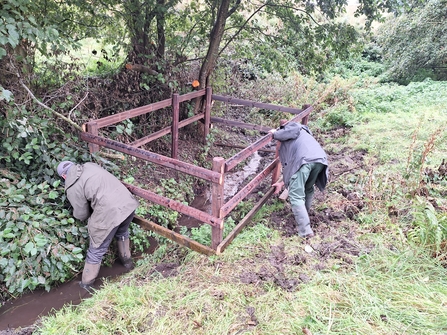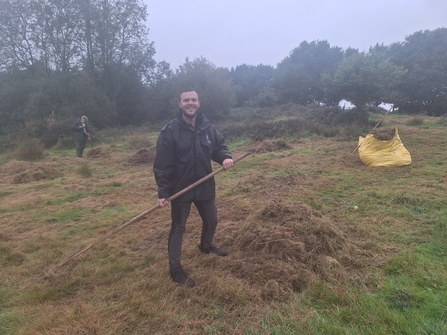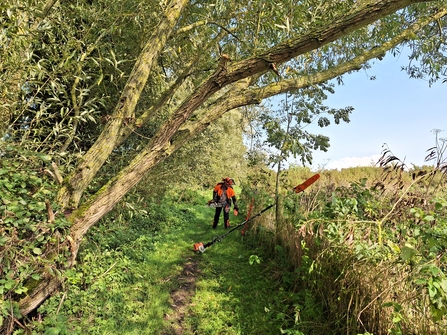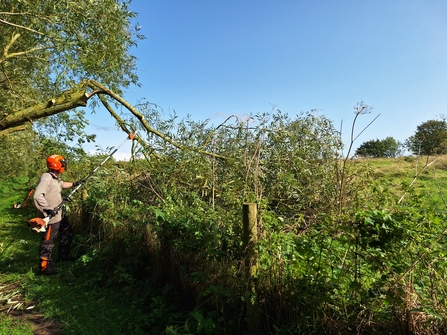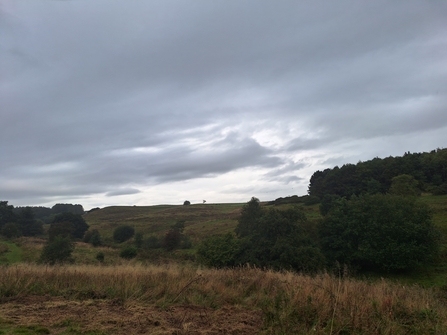My visit to Snipe Dales this month truly felt like a day in two halves. I knew as we got closer to the winter months that the weather would provide a new challenge on the reserve, but I was not quite prepared for the downpour we would have in the morning of my third visit. Luckily, the arrival of the sun in the afternoon helped us to dry out before it was time for me to go home.
When I had my usual briefing from James upon arrival about what jobs needed doing for the day, he mentioned the strong winds that were on their way from storm Agnes. There was a willow tree with a large crack in the trunk hanging over one of the paths and fences and that required immediate attention as it was likely the wind would manage to knock it down. There were also the usual jobs of checking on livestock across the reserves and clearing branches to improve accessibility with the tractor around the site. I was pleased to see Andy was volunteering again for the day, still committed to helping out despite the bleak clouds that were overhead.
Our first job had us heading in the truck to the reserve to build some railing around a stream, in order to stop the cows from churning the ground around it and blocking the flowing water. The water was from the water ram nearby, which is powered by the water from the numerous springs that rise in the Reserve. The water ram pumps one seventh of that water back up the hill to the nearby farm, with the rest joining the stream where we were working. It was important to make sure the railing was narrower near the ground, as I’m told the cows love to see if they can get their heads through the bottom.


